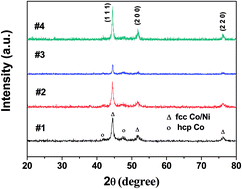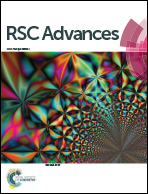Ferromagnetic and excellent microwave absorbing properties of CoNi microspheres and heterogeneous Co/Ni nanocrystallines
Abstract
CoNi microspheres with different diameters and heterogeneous Co/Ni nanocrystallines were synthesized via changing hydrothermal reaction parameters. The heterogeneous Co/Ni nanocrystallines comprised three kinds of particle morphologies, i.e., nanoflakes, nanospheres and needle-like nanowhiskers. The heterogeneous Co/Ni nanocrystalline sample coating (containing 60 wt% powder) exhibited a maximum reflection loss (RL) of −33 dB at 17.6 GHz and a bandwidth of less than −10 dB covering the 15.04–18.00 GHz range with a coating thickness of 1 mm. The CoNi microsphere sample with diameters in the range of 0.4–2.5 μm exhibited excellent microwave absorption abilities in the C-band (4–8 GHz) and X-band (8–11.5 GHz). However, the sample of chain-like assemblies from CoNi microspheres with a diameter above 2 μm presented poor microwave absorption in the 2–18 GHz range. In contrast, the excellent microwave absorption properties of the heterogeneous Co/Ni nanocrystalline sample in the Ku-band (12–18 GHz) could be attributed to the relatively high permeability (1.63–1.10) and optimal impedance matching between permittivity and permeability.



 Please wait while we load your content...
Please wait while we load your content...